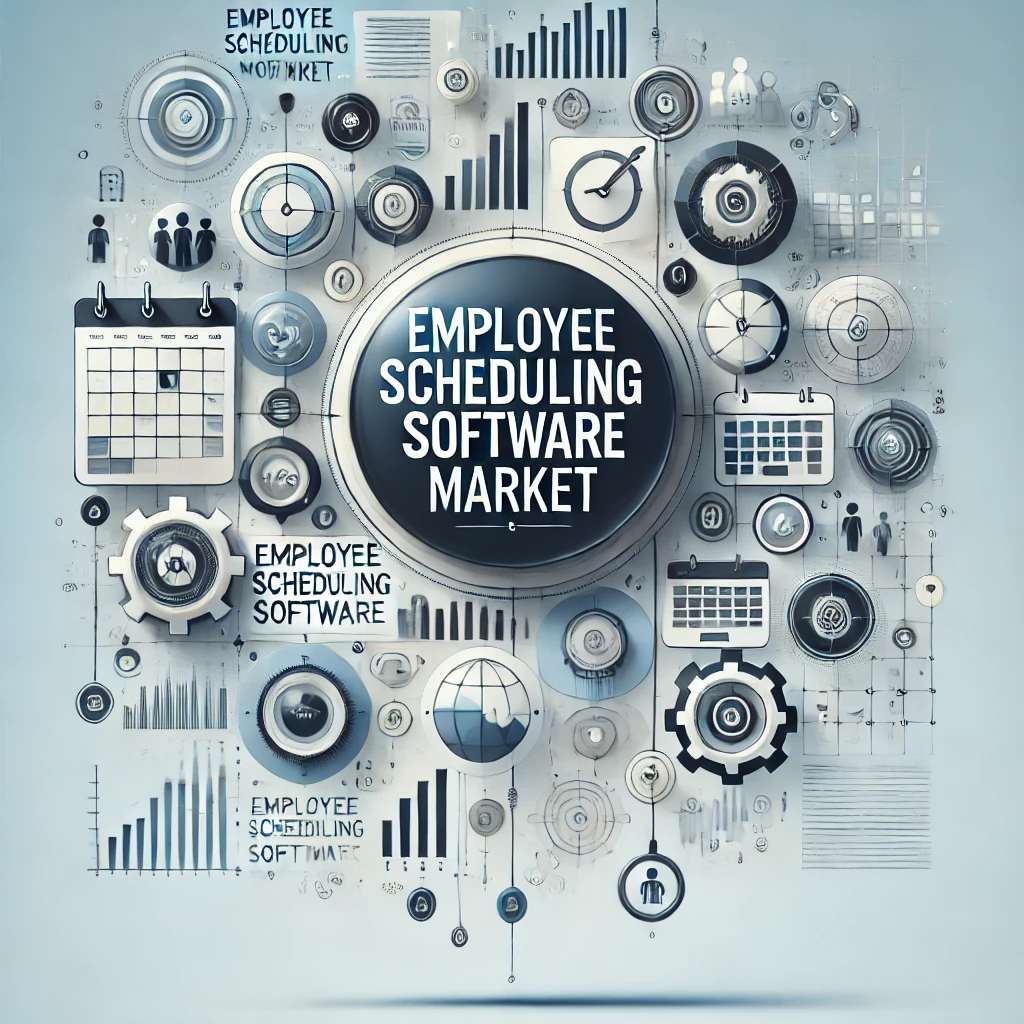Employee Scheduling Software Market Forecast and Trends 2024-2032

today’s fast-paced business landscape, efficient employee scheduling has become a cornerstone for organizations aiming to boost productivity and manage workforce challenges. Global Employee Scheduling Software market size was USD 481.54 million in 2023 and the market is projected to touch USD 1,251.92 million by 2032, at a CAGR of 11.2% during the forecast period. The employee scheduling software market has seen significant growth, driven by advancements in technology and the increasing demand for streamlined workforce management solutions. This blog explores the dynamics of this evolving market and why it’s crucial for businesses to embrace modern scheduling tools.
Get a Sample @ https://www.econmarketresearch.com/request-sample/EMR00821/
What is Employee Scheduling Software?
Employee scheduling software is a digital tool designed to automate and optimize workforce scheduling. These solutions allow managers to create, manage, and share work schedules while considering factors like employee availability, labor laws, and organizational needs. The software ensures compliance, reduces scheduling conflicts, and enhances employee satisfaction.
The Growing Demand for Employee Scheduling Software
The employee scheduling software market is witnessing robust growth due to various factors, including:
- Rising Workforce Size: Businesses with larger teams require advanced tools to manage employee schedules efficiently.
- Remote Work Trends: With the rise of hybrid and remote work models, scheduling software is essential for managing distributed teams.
- Compliance Requirements: Many industries face strict labor regulations, making accurate scheduling crucial to avoid penalties.
Key Features of Employee Scheduling Software
Modern employee scheduling solutions offer a range of features that simplify workforce management:
- Drag-and-Drop Scheduling: Easily create and adjust schedules with intuitive interfaces.
- Real-Time Notifications: Keep employees informed of their shifts and changes instantly.
- Shift Swapping and Requests: Enable employees to swap shifts or request time off without manual intervention.
- Analytics and Reporting: Gain insights into labor costs, attendance trends, and employee performance.
Market Trends Shaping the Industry
The employee scheduling software market is influenced by several emerging trends:
- Artificial Intelligence Integration: AI-powered scheduling tools predict demand, optimize shift allocation, and improve efficiency.
- Mobile Accessibility: The growing reliance on mobile apps allows employees and managers to manage schedules on the go.
- Cloud-Based Solutions: Cloud technology ensures scalability, data security, and real-time collaboration.
Buy now@ https://www.econmarketresearch.com/buynow.php/?license_type=su&id=EMR00821
Benefits of Employee Scheduling Software
Adopting employee scheduling software offers several benefits for businesses:
- Improved Productivity: Automating scheduling tasks frees up managerial time for strategic activities.
- Reduced Labor Costs: Optimized schedules prevent overstaffing and unnecessary overtime.
- Enhanced Employee Satisfaction: Transparent scheduling processes and self-service options boost morale and engagement.
- Better Compliance: Accurate tracking of work hours ensures adherence to labor laws.
Key Players in the Market
Several companies have established themselves as leaders in the employee scheduling software space. Some notable names include:
- Deputy: Known for its intuitive interface and robust features.
- When I Work: Offers mobile-first scheduling solutions for small to medium-sized businesses.
- Kronos Workforce Ready: Provides comprehensive workforce management tools for enterprises.
Report Sample @ https://www.econmarketresearch.com/industry-report/employee-scheduling-software-market/
Challenges in the Employee Scheduling Software Market
While the market is expanding, it is not without challenges:
- Adoption Barriers: Some organizations resist transitioning from manual methods due to cost or change management concerns.
- Customization Needs: Businesses in niche industries often require highly tailored solutions.
- Integration Issues: Ensuring seamless integration with existing HR and payroll systems can be a hurdle.
Future Outlook for the Employee Scheduling Software Market
The future of the employee scheduling software market looks promising, with projected growth driven by innovations in technology and increasing adoption across various sectors. As more organizations recognize the value of efficient scheduling, the demand for sophisticated, user-friendly tools will continue to rise.
Company info:
Phone Number : +1 812 506 4440
Email : sales@econmarketresearch.com
- Questions and Answers
- Opinion
- Motivational and Inspiring Story
- Technology
- Live and Let live
- Focus
- Geopolitics
- Military-Arms/Equipment
- Seguridad
- Economy
- Beasts of Nations
- Machine Tools-The “Mother Industry”
- Art
- Causes
- Crafts
- Dance
- Drinks
- Film/Movie
- Fitness
- Food
- Juegos
- Gardening
- Health
- Home
- Literature
- Music
- Networking
- Other
- Party
- Religion
- Shopping
- Sports
- Theater
- Health and Wellness
- News
- Culture

